Kai Zenkoji Temple
Main hall of Kai Zenkoji Temple.
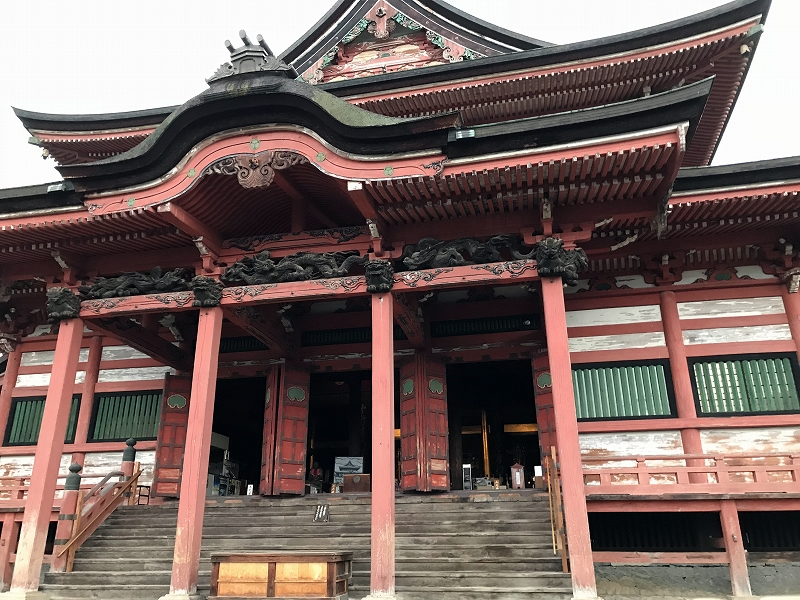
The main hall of Kai Zenkoji Temple is from another angle.
Kai Zenkoji Temple was established by Takeda Shingen in 1565.
The main hall is 27 meters tall and 49 meters long. Which is the largest wooden structure in Eastern Japan.
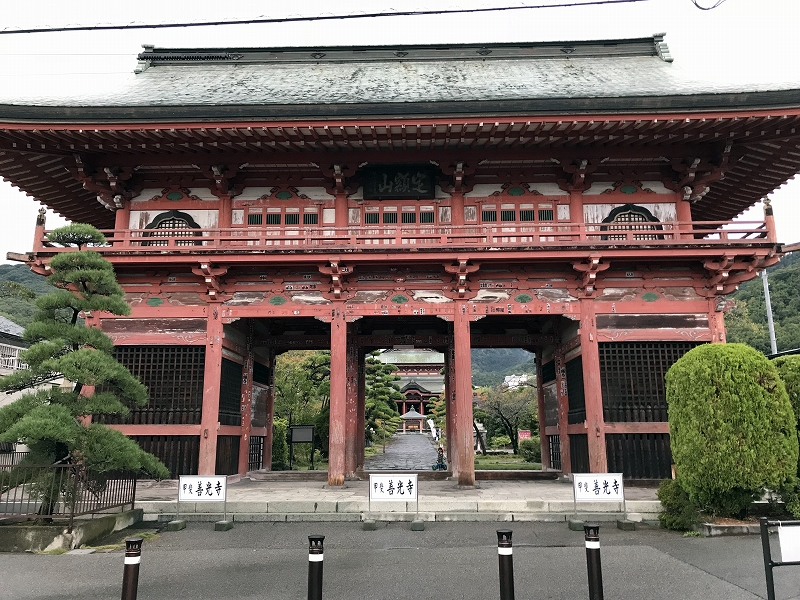
Main gate of Kai Zenkoji Temple.
You can see two wooden muscular statues on both sides of the gate.
These are called Kongorikishi (Dava King)—the guardian deity of Buddhism.
One statue has an open mouth and says, "Ah." The other, with his mouth closed, says, "Un."
In the Japanese syllabary, "Ah" is the first sound, and "Un" is the last sound.
The implication is that they symbolize from the beginning to the end of the world, life, etc.

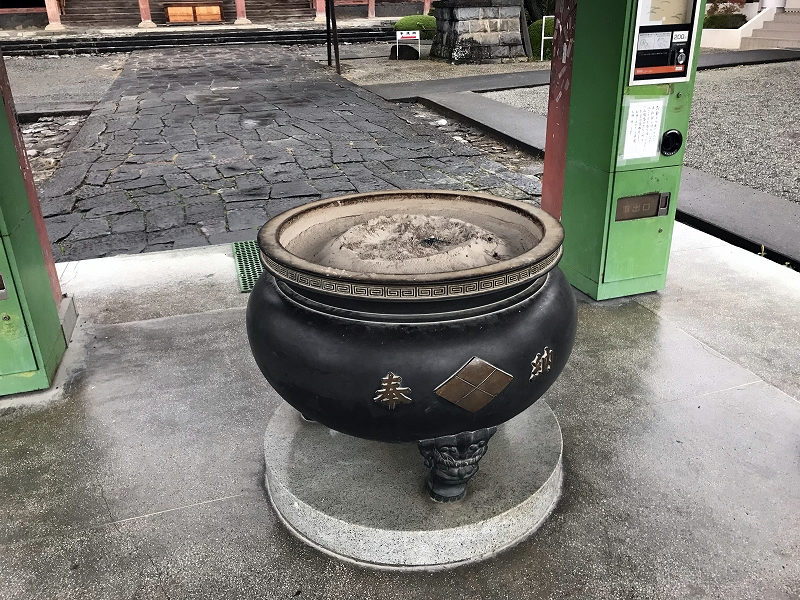
You can see the Large incense burner (Jokoro in Japanese) right in front of the Main hall.
Incense burners were brought to Japan from China about 400 years ago.
This is one of the purification facilities in Buddhism.
People came to believe that the smoke from the incense burner had a healing effect.
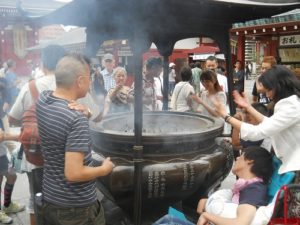
This is the picture of Sensoji Temple in Tokyo.
The people around the incense burner cover their heads with smoke.
They believe in the healing power of Holy smoke. They will become brighter.
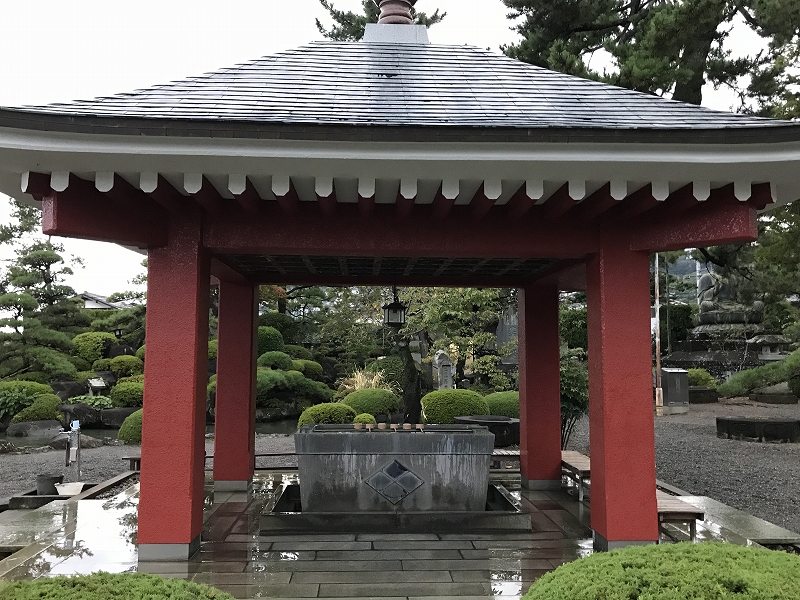

Water basin.
You can purify your hands and mouth using this water.
History of Kai Zenkoji Temple.
There are two temples named Zinkoji. One is in Nagano, and one is in Kofu in Yamanashi.
Kai is an old name for Yamanashi prefecture.
In the 16th century, Takeda Shingen (ruler of Kai) repeated battles against Uesugi Kenshin, who came from Echigo (Niigata prefecture).
Uesugi Kenshin was also a strong samurai warrior in those days.
They had fought at Zenkoji-daira, a basin in the northern part of Nagano prefecture.
Takeda Shingen feared that the Shinano Zenkoji Temple in Zinkojiaiira (Zinko in Nagano) might be destroyed by fire.
Shingen moved all Buddhist treasures and statues from Sinano to Kai in 1558.
Takeda Shingen built the main hall of the Kai Zenkoji Temple in 1565.
In the 17th century, Tokugawa Ieyasu unified and ruled Japan.
He was interested in Buddhism, and Kai Zenkoji is one of his favorites.
It became famous all over Japan.
However, the temple was completely burnt to ashes in 1754.
People reconstructed the temple in 1796. It took 31 years. It was a fantastic long time!
Kay Zenkozi, we can see is reconstruction.
The main hall and gate are designated as nationally significant cultural properties.
Inside of the main hall
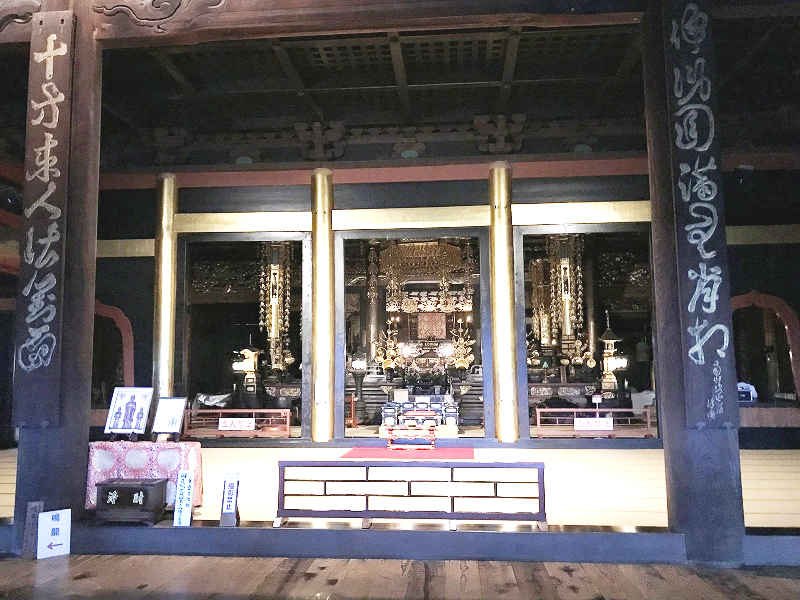
You need to pay ¥500 for entering the main altar to see the Buddhist statue.
Attention: Once you enter the altar, you will be prohibited from taking pictures.
You'd better take pictures from the entrance before entering it.
You can get a leaflet. Unfortunately, They don't prepare it in English.
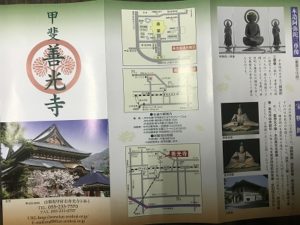
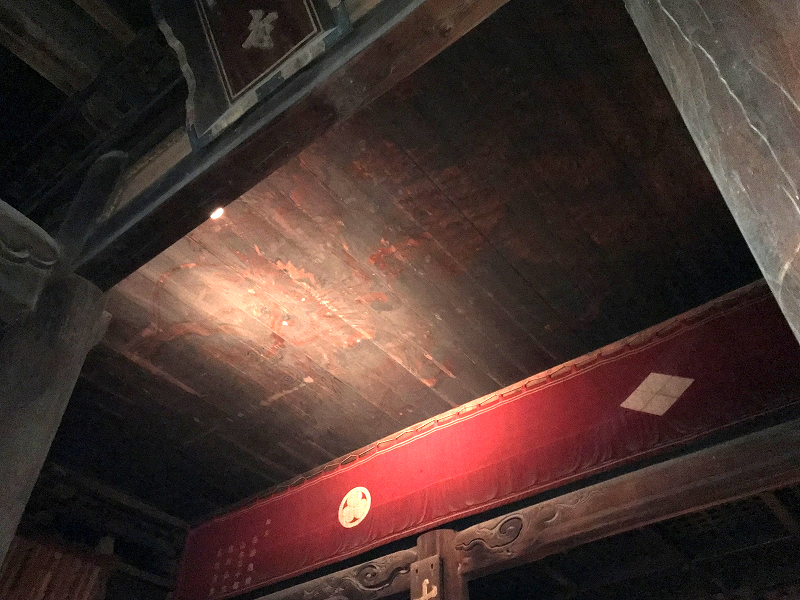
You enter the main altar. Soon, you could see giant dragons on the ceiling.
It's famous for" The Dragon's Cry."
There is a footstep print on the floor. First, stand up on there and clap your hands.
Sounds resonate with the ceiling and the floor, like in The Dragon's Cry.
Suppose many people were on the floor. The floor would go down under their weight, making it hard to resonate.
The fewer, The better.
You still have the main event yet.
You go down the back side of the temple. It's a pitch-black place.
You are looking for the Key in the dark corridor.
The Key is on the left side. You go forward, touching the left wall.
When you find the Key, you should make a wish!
The Key is connected to the Buddha. Your wish may come true.
Map
Kōfu-shi, Yamanashi-ken 400-0806, Japan
Information: Kai Zenkoji
Zip, 400-0806
Address, 3-36-1 Zenkoji, Kofu City
Tel, 055-233-7570
Fax, 055-231-0757
Mail, staff@kai-zenkoji.co.j